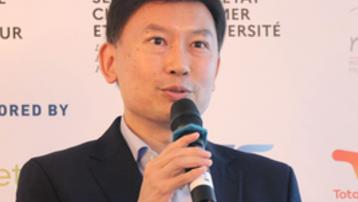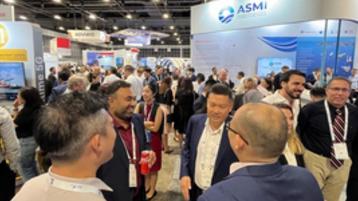Publications
FOCUS 74: Building A City With Low Carbon Emissions

Julie Bonamy, CEO Malaysia, Singapore and Indonesia at Saint Gobain, gives an overview of the company's sustainable-forward initiatives.
As electricity gets cleaner, newer tall buildings will become more energy-efficient. What is Saint-Gobain’s actively doing to reduce carbon emissions?
Mitigating climate change means decarbonizing our economies. Saint-Gobain’s goal is simple: we commit to net-zero carbon emissions by 2050. This commitment was made on September 23, 2019 in New York, when Saint-Gobain signed the UN Global Compact’s "Business Ambition for 1.5°C" pledge.
Reducing our carbon footprint has been a priority for a long time now, strongly supported by our CEO, Pierre-André de Chalendar, who wrote a book on this topic back in 2015. In November 2020, we have further committed to reducing our direct emissions from our plants and electricity-related emissions by 33% by 2030; and the value chain emissions by 16% over the same period. To meet these targets, Saint-Gobain will dedicate a targeted capital expenditure and R&D budget of around €100 million per year until 2030.
Saint-Gobain pursues a range of methods to reduce carbon emissions, including product design and new composition for materials, making industrial processes more energy efficient, moving our energy mix towards low-carbon and renewable sources, working with partners who supply raw material and those who transport our products to lower their emissions, and finally, investigating carbon capture and sequestration solutions for residual emissions. For instance, we signed a 12-year power purchase agreement in early 2020 in the United States to reduce our CO2 emissions by 21%.
On top of it, Saint-Gobain’s products and solutions contribute themselves to the reduction of CO2 emissions. 60% of our products portfolio contributes directly or indirectly to the reduction of CO2 emissions. For instance, within only three months, thanks to energy savings, our insulation solutions compensate the CO2 emissions linked to their production. We develop innovative products and solution in all our businesses: for instance, our Webercol Flex Eco tile adhesive enables a reduction 50% of CO2 emissions; 28% of water consumption; and 27% of the use of non-renewable energy.
How does Saint Gobain play a role in this vision Singapore’s smart city roadmap?
In Singapore, the Smart City initiative (also called “Smart Nation”) encourages the use of digital innovation and technology to drive sustainability and livability. This objective aligns with our belief that the city of the future has to take into account the citizens, the inhabitants, the ones who live in the buildings and have to feel comfortable.
The idea of wellbeing in the smarty city is key for Saint-Gobain, with the concept of Multi-comfort: thermal comfort, audio comfort, visual comfort, indoor air comfort, safety and affordability. The Multi Comfort design concept is about building and renovating our homes, offices, school, hospitals and other buildings in a way that gives us improved comfort, health and wellbeing whilst protecting the environment. This is where Saint-Gobain’s expertise in building science makes a material difference.
We also rely on digital technology to participate in the development of smart cities. It is an interesting tool to link the wellbeing of the user to the materials and solutions which we can provide. For example, Saint-Gobain has developed a digital tool called “Comfort meter” to measure the parameter of the environment (temperature, humidity, acoustic and light). With this information, we are able to understand people wellbeing and develop our Multi-Comfort solutions for buildings

Interview with Julie Bonamy, CEO Malaysia, Singapore and Indonesia at Saint Gobain, for FOCUS #74. To read more articles from this issue, download your digital copy here


